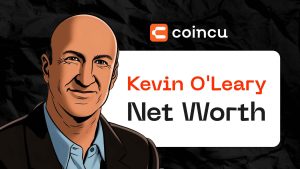Gains Network Design Mechanism: How The Platform Works During The FTX Crisis
Key Points:
- Gains Network has special mechanisms that made it thrive through last year’s crisis.
- gDAI is one of the LP tokens that helps users limit risks. In the event of excessive collateral, GNS will take a portion of the profit brought by the Trader’s loss to redeem GNS.
- During the incident caused by Luna, GNS’s LP once fell into a deficit and was forced to sell GNS for DAI to fill the gap.
The new versions of GMX and SNX Perp both draw on a project – Gains Network (GNS). Its native token GNS has increased by more than 10 times since the Luna crisis last year, and its transaction volume and fee income have also hit new highs. This is inseparable from its continuous innovation in mechanisms.
This article will give you a detailed introduction to the mechanism, development history, and competitive advantages of Gains Network. It can be said that if you understand Gains Network, you can see through many DEX PERPs at a glance.
Mechanism of Gains Network
If you lack a basic understanding of Gains Network, it is simply a decentralized perpetual contract platform:
- Oracle pricing, LP and Trader betting
- LP is a pure stable currency and supports foreign exchange / stock / cryptocurrency transactions
- Two-way funding rate, one party pays the other party the same as CEX Perp
GMX is a full guarantee model, that is, every 1 ETH multi-position GLP bottom layer has 1 ETH spot support, which allows GMX to survive the violent bull market. So how does Gains Network, which only has stablecoins at the bottom, deal with risks?
Gains Network has three mechanisms to control risks on the transaction side and the LP side, the core of which is:
- Asset spot liquidity determines the slippage of on-site transactions and prevents price manipulation
- Asset price volatility and long-short ratio determine the cost of continuing to hold positions, and deal with unilateral market conditions
- Net worth model plus liquidity adjustment and cash flow cycle to build a stable LP
Gains Network uses the triple mechanism of Spread, Rollover Fee, and Funding Fee for risk control on the transaction side.
- Spread: Additional opening costs, the larger the opening position, the less liquid the assets, and the higher the cost. It is used to prevent price attacks and facilitate the listing of small currencies.
- Rollover Fee: Priced by spot volatility, used to control trader’s leverage and risk
- Funding Fee: The price is determined by the difference between long and short positions and the spot volatility. When long/short > 1, the long pays the short, and vice versa. It is used to balance the long-short ratio and avoid excessive unilateral exposure.
Spread is the extra slippage that needs to be paid when opening a position. For oracle pricing, its slippage should be dynamically adjusted according to the depth of the transaction pair from the oracle source (CEX) so that the cost of manipulating prices outside the market is always higher than the profit on the market. Therefore, Spread is positively related to the scale of opening positions and the impact of OI on the market and negatively related to the depth of off-market spots.
Each pair will have two parameters, the 1% depth above (for longs) and the 1% depth below (for shorts).
It will be calculated like so:
Price impact (%) = (Open interest {long/short} + New trade position size / 2)/ 1% depth {above/below}.
It means the open price of all trades will still follow the spot price of the pair, but depending on the open interest on the pair it will be higher (longs) or lower (shorts).
Note: Price impact/spread never applies when closing a trade.
Rollover Fee/Funding Fee is calculated based on recent volatility. The Rollover Fee is paid for both long and short positions, while Fung Fee is determined by the long-short ratio and paid by one party to the other. The specific formula is shown in the figure below.
In a violent bull market, the increase in volatility and the long-short ratio will cause the fees paid by multiple parties to rise rapidly so as to cover the losses of the counterparty and control the long-short ratio. Of course, these also caused a lot of transaction costs, so in cryptocurrency, an asset class that can be used as Index Asset LP, the volume will be inferior to GMX.
The parameter will depend on the volatility of the pair, which we measure using the AT’R indicator (true average range):
Rollover fee per block % = (ATR % 4 week average)^x * 52 / y (with x = 1.25,and y = 20)
Accumulated funding fee per OI (long) += (Long OI – Short 0I) * blocks elapsed * funding fee per block % / Long OI.
Accumulated funding fee per OI (short) += (Short OI – Long 01) * blocks elapsed * funding fee per block % / Short OI.
Funding fee per block % = (ATR % 4 week average)^x * 52 / y (with x = 1.25, and y = 60)
The so-called Rollover Fee is only applied to the collateral, that is, you use $1k to open a $10k position, and you only receive interest based on your $1k, while the Funding Fee is applied to the position, and you receive 41% based on $10k.
For example, in the picture below, $1k short $10k BTC, Funding Fee (s) = -0.0005%, Rollover Fee = 0.0043%. Then the final Fee that needs to be paid = ($1k *0.0043% – $10k 0.0005%)/$10k = -0.00007%; that is, you can still earn interest by opening short positions at this time.
LP side – gDAI also has a triple mechanism to make it run robustly:
- Net value products similar to GLP, without capital protection
- Fee income / Trader profit and loss creates a layer of buffer for gDAI to avoid price drops
- Incentivize long-term lock-up funds, dynamically adjust the time of entry and exit, and avoid liquidity problems in extreme situations.
The advantage of the so-called net value products is that all pledgers are treated fairly, and extreme situations are shared. The old LP model is so-called capital preservation, but under the deficit, the last one who runs away will not get a penny. Yes, it is the same as FTX, so it is naturally easier to panic at a critical moment.
The most difficult thing to understand here is the heavy machinery of Buffer. Part of the Gains Network fee income will be paid to users by Mint’s new GNS, while the DAI originally used as income will enter gDAI to form the over-collateralized Buffer.
Trader’s profit and loss will be over-collateralized Under certain circumstances, it will also enter the Buffer, which makes gDAI not guaranteed capital in name, but in fact, the price will not drop most of the time, which shows that it is well aware of the public’s “loss aversion” psychology.
At the same time, in the case of over-collateralization, Gains Network will take part of the profit brought by the trader’s losses to repurchase GNS and keep the over-collateralization rate fluctuating within a safe range. In this way, Gains Network will not be in a state of massive additional issuance in the long run.
Long-term lockup of LP will give it a certain discount, and the source of funds for the discount is also paid from this Buffer. The so-called dynamic adjustment means that the lower the over-collateralization rate, the slower the withdrawal, which increases the ability to resist risks. Although it is a bit strange to do so, the rules are open and transparent in advance.
Yes, you may not understand the above paragraphs; this is normal; otherwise, how can we call it the most sophisticated and complex in history.
Development history
In the crash brought by Luna, Gains Network’s LP was once in a deficit deadlock and was forced to sell GNS for DAI to make up for the gap. Later, Gains Network was improved in many ways, and it performed well in the panic caused by FTX.
In fact, in June after the trouble, the triple risk control mechanism on the transaction side described above was fully capped, allowing it to resume normal operations, and in September it began to capture the hot spot of the depreciation of foreign currencies against the US dollar at that time, making it Return to public view.
At the beginning of December, gDAI was capped, and at the end of the month, it was deployed to Arbitrum, bringing about an explosion in both currency prices and business data at the beginning of this year. The high-efficiency team has allowed Gains Network to continue to evolve to achieve such a phenomenon of phoenix nirvana.
Competitive advantage
The core advantage is that through its complex risk control mechanism, it provides a foreign exchange/stock derivatives trading place with qualified experience. The trading experience on these assets is the best so that its products can stand on their own. On the other hand, the two-way funding rate and other factors have allowed it to achieve differentiated competition with GMX, and it has also successfully acquired some customers in terms of cryptocurrency. This is inseparable from the excellence of the Gains Network team, which is the most valuable asset of this growing project.
The details of GNS fees are as follows. Considering that market orders account for about 70%, the GNS staking share is about 0.07/0.16×70%+0.03/0.16×70% = 36.25%, and the gDAI share is about 0.03/0.16 = 18.75%. The part of the limit order paid to the NFT Bots (execution robot) is the part that entered the gDAI Buffer in the previous tweet.
Yes, Gains Network pays an unusually low percentage of revenue to LPs, so why is it able to do this?
- In order to avoid Fork, Gains Network has been audited but is not yet fully open source
- As mentioned in the previous tweet, its mechanism is extremely complicated, it is very difficult to copy, and it is easy to overturn if it is not copied
- LPs that are not fully collateralized allow them to operate with high capital efficiency
Although Gains Network seems to distribute a large part of the team’s income, in fact, in most of the current projects, such as UNI, Maker, Lido, etc., their treasury income cannot or can barely cover the team’s expenditure, so they still need to continue to sell coins. And it’s pretty good that GNS can live on revenue sharing. After all, you can’t ask every team to be like a charity like GMX.
Conclusion
After reading this, we think you will also sigh. In fact, the so-called DEX Perp is far from a simple statement that Trader and LP are counterparties to each other. So it was not until GMX adopted the low-risk Index Asset full mortgage model, coupled with the excellent details of its team, that a product finally appeared that was used by people. However, to trade unchained assets such as foreign exchange/stocks and further expand the cake, we must use the synthetic asset model of Gains Network, and it is also iterative until today that we finally see the dawn.
DISCLAIMER: The Information on this website is provided as general market commentary and does not constitute investment advice. We encourage you to do your own research before investing.
Join us to keep track of news: https://linktr.ee/coincu
Harold
Coincu News

























